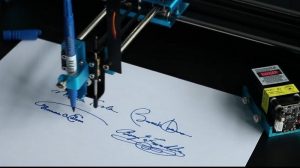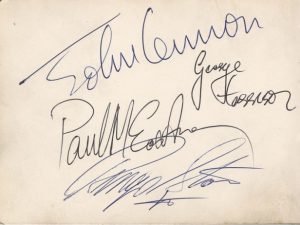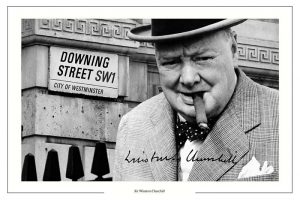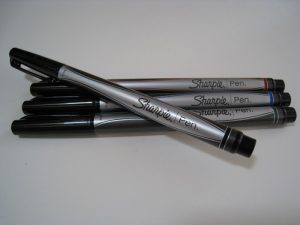Welcome to our guide to autograph collecting including useful help and tips
Overview
Unfortunately there are many autographs offered for sale that are not authentic. In this section of our website we aim to educate you the collector on the topic of forgeries, pre-prints, autopens and secretarial’ s which due to the ever increasing demand for celebrity autographs are now widespread. These types of autographs are frequently sold via internet sites and online auctions such as eBay, where the seller can remain anonymous and trade using PO Box addresses. We also include a section on caring for your collection. Many celebrities, both vintage and contemporary, are extremely hard to find in authentic form due to their reluctance to sign. This includes both celebrities of the past such as Marlon Brando and contemporary stars like Lenoardo diCaprio. However they continue to be offered regularly by dubious sources most using internet auction sites to advertise their stock. Diligence and education is therefore needed in collecting autographs in today’s society. We keep numerous autograph facsimile examples in our reference library and compare our inventory against known authentic examples. Read on to learn more about autographs that are often sold as `authentic` but are not as they seem.
Autopens
Autopens are mechanical devices that can sign identical autographs quickly and, on occasion, accurately. They have been around for some time and used by many celebrities in an attempt to satisfy the collector whilst removing the time required to do other things. Generally, autopens are exactly the same autograph following a pattern made which is used as the template for the machine. Autopens can be identified via close study and on comparison with other examples. See the image of an autopen at work below.
Secretarial
Many celebrities are known for using `secretaries` to sign on their behalf, again relieving the burden of signing multiple items themselves. It is essential to compare signatures against known secretarial’s and in person examples, many of which are provided in publications, magazines and from reputable dealer websites. Celebrities such as Paul Newman, Clint Eastwood, and Robert DeNiro have used secretaries for some time and with the ever increasing demand via the mail these are becoming more widespread. See below the Monroe example of a secretarial autograph.
Forgeries
Unfortunately, autographs are an easy method for unscrupulous people to make money through knowingly forging autographs. This is a great shame and extreme care should be taken before you buy in finding out about the dealer, their history & reputation. We have heard many people say `your signed photo of … is expensive, I have seen one on the internet for only $20`. Price can give a good indication of whether the offered item is genuine. Many autographs are extremely hard to obtain and the price they fetch reflects this. If a dealer has many of the same at a low price maybe it is `too good to be true`. Suddenly the one at $20 becomes expensive… See Beatles example below.
Pre-Prints
Pre-printed autographs are `signatures` that form part of the photograph, having been originally signed by the celebrity in question to then be mass produced. Under magnification the autograph shares the same dots per inch (DPI) with the photograph. They are useful for reference purpose because the celebrity signed the original example and thus provides an accurate example of their autograph. Many celebrities use this method to satisfy mail autograph requests or to sell cheaper options. See Winston Churchill example below.
Authentication Process
There are many ways that collectors should undertake to ensure authenticity.
What is it signed on. Before the autograph itself is evaluated, check upon what it is signed. If you are offered a `Laurel and Hardy` autograph on a glossy colour photo it is most certainly fake. Check the style of signature and the period under a magnifying glass.
The Ink. Fountain pens are the oldest form of ink writing and common for vintage autographs from the 1920`s and 30`s. This type of ink however does fade with time. Early ball point pens used ink being of experimental nature. This ink faded badly and it wasn’t until 1954 that improved ink was introduced. Sharpie`s were formed in 1963 by the Sanford Company in black ink, followed in 1964 with blue ink. It wasn’t until the late 1970`s however that Sharpie`s become common. Today, Sharpie`s are widespread in a variety of colours
Reference library
Compare the signature against known libraries of in-person signatures available in specialist publications and autograph magazines. Signers generally sign on the same location and with the same size. There are many good reference books although two of the best are `Celebrity Signature Facsimiles by Doris & Kris Bernard` and `Celebrity Autograph Authentication Guide by Kevin Martin.
Uninterrupted flow of ink
Genuine signatures show varying degrees of pressure and thickness in stroke and have a consistent flow. Many fake autographs are produced at a slow pace to prevent error and have no flow to them. Autopens usually produce small squiggles as it attempts to make a straight line and ink can be spilled as it starts and stops. Check for obvious spelling mistakes and dates. Check the spelling of the signature. Many forgers make obvious mistakes.
Source
Good quality dealers are unlikely to knowingly get involved with anything other than genuine material. Use a reputable dealer such as one registered by the UACC or PADA.
Authenticators
There are a handful of people offering authentication services whom I consider reputable and knowledgeable. These include the following, which you can find on the internet.
- Al Wittnebert (20th Century)
- Steve Zarelli (Space related material)
- Roger Epperson (Music related material)
- Garry King (20th Century)
- JD Bardwell (Contemporary)
- Steve Grad – Becketts (All forms)
- James Spence Authentication (All forms)
- AutographCOA – ACOA (All forms)
Certificates of Authenticity (COA)
It is vitally important to remember that any COA is only ever as good as the issuer. A Certificate of Authenticity from an unknown company or without an image is worthless. It is NO guarantee in itself of authenticity. Its main purpose is to act as a reassurance to the buyer and a record of where a purchase was made. Most COAs do not stand up to detailed scrutiny. Many of the worlds most established and best known dealers do not even issue them, preferring to simply reimburse any customer who might express any sort of dissatisfaction with a purchase. Reputation is king and the modern use of social media can damage something that might have taken years to gain.
Caring for your collection
It is imperative to handle your autograph collection correctly. Below are a few helpful tips to consider.
- Ensure the autographs are kept away from direct sunlight as this will fade the ink.
- If autographs are framed, use acid free material.
- Store them in suitable folders and files using non-acidic material.
- Ensure the environment in which you store your autographs is dry and cool. High moisture content can destroy paper.
Autograph Clubs
Universal Autograph Collectors Club (UACC)
PO BOX 6181
Washington DC
20044 – 6181, USA
www.uacc.org
Professional Autograph Dealers Association (PADA)
PO BOX 1729-A Murray Hill Station
New York NY 10156, USA
www.padaweb.org
The Autograph Fair Trade Association (AFTAL)
PO Box 354, Dartford, DA1 9GH, UK
www.aftal.org.uk





